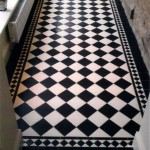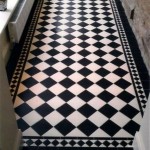Engineered Wood Flooring Vs Tile: A Comparative Analysis
The selection of flooring is a crucial decision in any construction or renovation project. The floor covering not only contributes to the aesthetic appeal of a space but also significantly impacts its functionality, durability, and overall value. Two popular options for flooring materials are engineered wood and tile. Each material offers a unique set of advantages and disadvantages, making the choice dependent on the specific needs and priorities of the project.
This article provides a comprehensive comparison of engineered wood flooring and tile, exploring various aspects such as cost, durability, maintenance, aesthetics, installation, and environmental impact. The aim is to furnish readers with a thorough understanding of both materials, enabling them to make an informed decision based on their individual circumstances.
Engineered wood flooring is a composite material consisting of a thin layer of hardwood veneer bonded to a core of plywood or high-density fiberboard (HDF). This construction provides enhanced stability and resistance to moisture compared to solid hardwood. Tile, on the other hand, is a broad category encompassing ceramic, porcelain, and stone materials. These are typically manufactured from clay or other natural minerals, hardened by firing at high temperatures.
Cost Considerations
The initial cost of materials represents a significant factor in the flooring selection process. Engineered wood flooring typically falls in the mid-range to high-end price bracket, depending on the species of wood used for the veneer, the thickness of the veneer, and the quality of the core material. Exotic wood species and thicker veneers will generally command a higher price. Installation costs for engineered wood can vary, influenced by the complexity of the project and the chosen installation method (e.g., floating, glue-down, or nail-down).
Tile flooring presents a wider range of price points, depending on the material and design. Ceramic tiles are generally the most affordable option, while porcelain and natural stone tiles tend to be more expensive. The cost of tile also depends on factors such as size, pattern, and texture. Installation costs for tile can be considerable, particularly for intricate patterns or large-format tiles. Professional installation is often recommended to ensure proper setting and grout application.
Beyond the initial cost, long-term expenses must also be considered. Engineered wood flooring may require refinishing over time to restore its appearance, adding to the overall cost. Tile, on the other hand, is generally very durable and requires minimal maintenance, but cracked or chipped tiles may need replacement.
Durability and Maintenance
Durability is a critical consideration, particularly in high-traffic areas. Engineered wood flooring offers good resistance to scratches, dents, and wear, especially when finished with a durable coating. However, it is still susceptible to damage from excessive moisture or standing water. The thickness of the veneer layer directly impacts the number of times the flooring can be refinished, thus affecting its lifespan.
Tile is renowned for its exceptional durability and resistance to wear and tear. Porcelain tile, in particular, is highly resistant to scratches, stains, and moisture, making it suitable for areas prone to spills or high humidity. Natural stone tiles are also durable but may require sealing to protect them from staining. The grout lines between tiles can be susceptible to staining and mold growth, requiring regular cleaning and occasional sealing.
Maintenance requirements vary between the two materials. Engineered wood flooring needs regular sweeping or vacuuming to remove dust and debris. Damp mopping is acceptable but should be done sparingly to avoid water damage. Specialized wood floor cleaners are recommended to maintain the finish. Tile flooring is relatively easy to clean with water and mild detergents. Grout lines require more attention and may benefit from specialized grout cleaners. Both flooring types benefit from the use of mats and rugs in high-traffic areas to reduce wear and tear.
Aesthetic Considerations and Installation
The aesthetic appeal of flooring is a major factor in the selection process. Engineered wood flooring provides the natural warmth and beauty of real wood, with a wide range of species, colors, and finishes available. It can mimic the look of solid hardwood flooring but offers greater stability and resistance to moisture. The grains and textures of the wood veneer can add character and visual interest to a room.
Tile flooring offers a vast array of styles, colors, patterns, and textures. Ceramic and porcelain tiles can mimic the appearance of natural stone, wood, or even metal. Large-format tiles can create a seamless and modern look, while mosaic tiles offer intricate designs and patterns. The design possibilities with tile are nearly limitless, allowing for customization and creative expression.
Installation of engineered wood flooring can be relatively straightforward, particularly with click-lock systems that allow for floating installations. Glue-down or nail-down installations may require more expertise. Proper subfloor preparation is crucial to ensure a level and stable surface. Tile installation is generally more complex, requiring precise cutting, setting, and grouting. Professional installation is often recommended to ensure a proper and aesthetically pleasing result.
Underfloor heating systems are compatible with both engineered wood and tile flooring. However, the choice of material may influence the efficiency of the heating system. Tile tends to conduct heat more efficiently than engineered wood, resulting in quicker and more even heat distribution. When installing underfloor heating with engineered wood flooring, it is essential to select a product specifically designed for this purpose and to follow the manufacturer's guidelines.
Environmental Impact
The environmental impact of flooring materials is an increasingly important concern. Engineered wood flooring can be a sustainable option if sourced from responsibly managed forests. Look for certifications such as the Forest Stewardship Council (FSC) to ensure that the wood is harvested sustainably. The manufacturing process of engineered wood can involve the use of adhesives and finishes that may contain volatile organic compounds (VOCs). Low-VOC or VOC-free products are available and are a more environmentally friendly choice.
Tile is generally considered a durable and long-lasting material, which can reduce the need for frequent replacement and minimize waste. Ceramic and porcelain tiles are made from natural materials, such as clay and minerals. However, the manufacturing process can be energy-intensive and may involve the use of chemicals. Recycled content tiles are available and offer a more sustainable option. The transportation of tile can also contribute to its environmental footprint, so locally sourced materials are preferable.
Both engineered wood and tile flooring can contribute to indoor air quality. Engineered wood flooring may release VOCs from adhesives and finishes, particularly in the initial period after installation. Proper ventilation can help to mitigate this issue. Tile is generally considered to be hypoallergenic and does not emit VOCs. However, the grout used between tiles can be a source of mold growth if not properly maintained. Regular cleaning and sealing of grout lines can help to prevent this.
Ultimately, the choice between engineered wood flooring and tile hinges on weighing these various factors against budgetary constraints and lifestyle choices. Careful consideration helps ensure the optimal flooring solution for any space.

Tile Vs Engineered Hardwood Flooring

Hardwood Vs Wood Look Tile Which Is The Better Choice Modern Castle

Floor Vs Tiles Or Engineered Wood Flooring Niro Granite

Tile Vs Wood Flooring A Comprehensive Guide For Your Home

Tile Vs Engineered Hardwood Choosing The Best Flooring

Porcelain Tile That Looks Like Wood Vs Hardwood Vinyl Travertine Flooring

Tile Floors Vs Wood A Head To Comparison Carlisle Wide Plank

Tile Vs Engineered Hardwood Choosing The Best Flooring

Hardwood Vs Tile Kitchen Flooring A Comprehensive Comparison Ranney Blair Weidmann

Wooden Flooring Versus Tiles Kajaria S No 1 Tile Co







